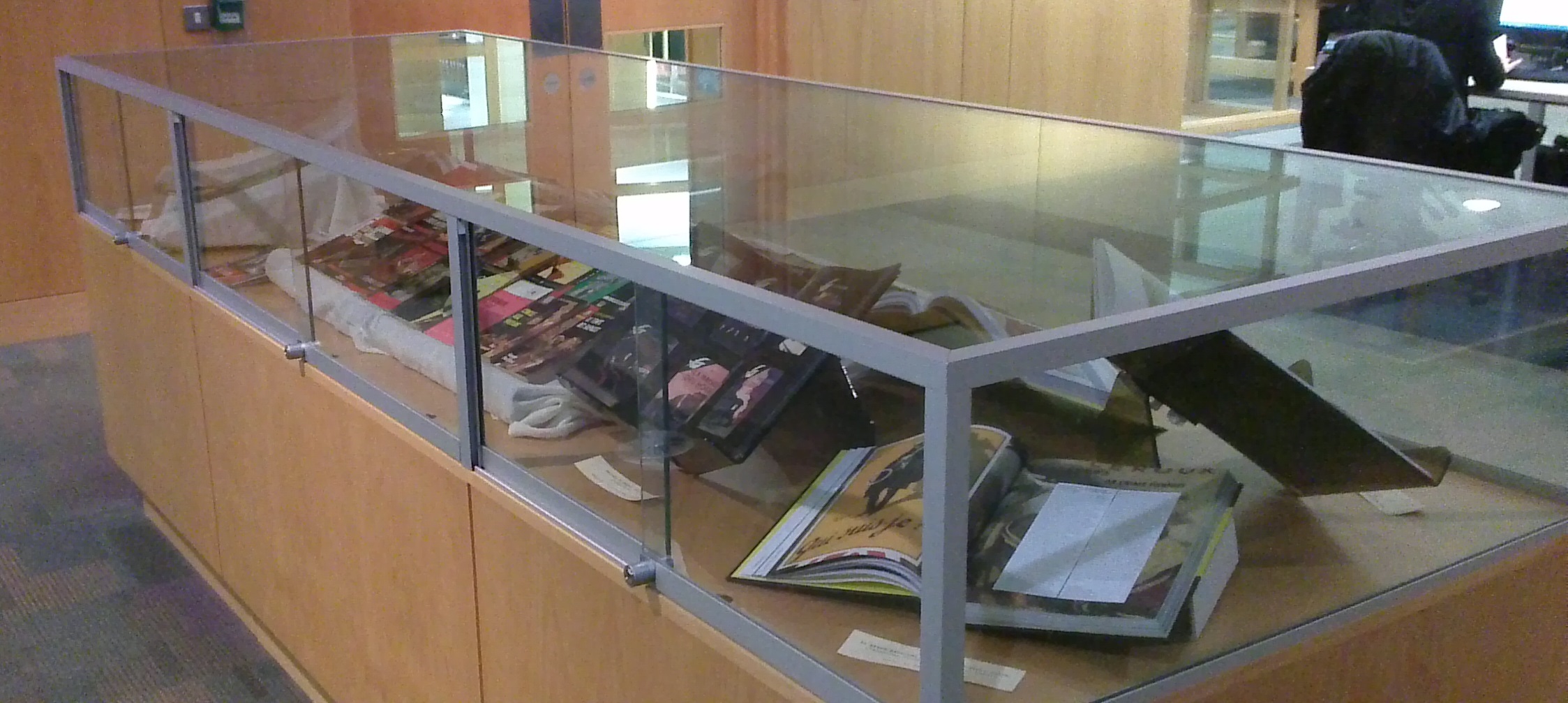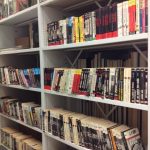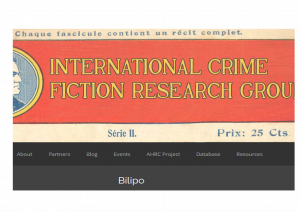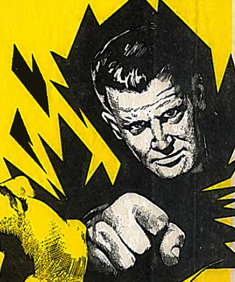The Art of French Crime Fiction

Our new display, curated by Dr Dominique Jeannerod (School of Modern Languages), features an exhibition devoted to classic French Crime Fiction and Suspense Literature series.
 The exhibition showcases some of the 1,500 Crime Fiction books in the French language which have been added to the collections, having recently been donated to the Library by the Paris-based Bibliothèque des Littératures policières (BILIPO) and other partners in the project Visualising European Crime Fiction.
The exhibition showcases some of the 1,500 Crime Fiction books in the French language which have been added to the collections, having recently been donated to the Library by the Paris-based Bibliothèque des Littératures policières (BILIPO) and other partners in the project Visualising European Crime Fiction.
This project, led by Dr Dominique Jeannerod, together with colleagues in the ICRH Research Group, International Crime Fiction, was awarded a grant by the AHRC, as part of the Big Data in the Arts and Humanities Framework (2014-15).
 The chief task of the Visualising European Crime Fiction project was, as Dr Jeannerod explains,
The chief task of the Visualising European Crime Fiction project was, as Dr Jeannerod explains,
“To develop innovative digital methods with which to bibliographically record (database) and visually present (Graphs, Maps, Dataviz) the innumerable volumes of Crime Fiction published across Europe since the early 20th Century. The aim in developing such new digital instruments was to rethink the significance of popular culture and its dissemination in a globalised world. It was also to reconsider the role of crime fiction in a transnational, cultural and literary context.”
“The present exhibition, based on a small sample of French
publishers’ series from the 1950’s and 1960’s devoted to Crime Fiction and Spy thrillers gives an idea of the variety and attraction of these mass market publications, and reflects on their iconic cover art”
“Graphic artists such as Aslan, Brantonne, Michel Gourdon and Jef de Wulf are associated with the series to which they contributed thousands of original drawings and to whom they lent a distinctive, immediately recognisable identity. Their work was celebrated by artists such as Jean Cocteau and their popularity usually surpassed that of the authors of the books they illustrated. The endlessly repeated themes and archetypes seen on these covers reveal to us to what extent these books were active agents in the
dissemination of post-war mythologies. This should remind us that these, or very similar images were absorbed and appropriated, by whole populations across Europe, both as commonly available (and disposable) commodities, and as magical objects”
Acknowledgements: (Dominique Jeannerod)
Many thanks are due to the BILIPO and its director, Catherine Chauchard, as well as to Senior Librarian Samuel Schwiegelhofer, for their unique and indispensable collections and their enthusiasm and knowledge in sharing them. Many thanks also to Stéphane Ménard, for the generous donation of hundreds of vintage volumes from his rich private collection, and to Isabel O’Kelly of the McClay Libraryfor her unfailing support. I am also grateful to Philippe Aurousseau, Didier Poiret, Thierry Gautier, Jacques Chesnais, Federico Pagello, John Thompson, Daniel Magennis, Daniel Finlay, Annika Breining, Markus Schleich, Deirdre Wildy, David Gordon, Bronagh McCrudden and to all the colleagues and partners in the International Crime Fiction Research Group.
Fuller details of the Crime Fiction books featured in the display can be found below:
Agapit, Marc Le Pays des Mutants (Paris: Éditions Fleuve noir, 1971).
Agapit, Marc Phantasmes (Paris: Éditions Fleuve noir, 1962).
Agapit, Marc Les Ciseau d’Atropos (Paris: Éditions Fleuve noir, 1973).
Agapit, Marc L’Antichambre de l’Au-Delà (Paris: Éditions Fleuve noir, 1970).
Barner, Alex Vendu au FBI (Paris: Éditions Galic, 1962).
Becker, Benoît Dernier Contact (Paris: Éditions Fleuve noir, 1955).
Béraud, Mario La Maison Rouge (Paris: Éditions Galic, 1963).
Braun, Maurice-Georges Qu’un Sang Impur (Paris: Éditions Fleuve noir, 1957).
Braun, Maurice-Georges La Belle et Satan (Paris: Éditions Fleuve noir, 1953).
Bruce, Jean O.S.S. 117 Contre X (Paris: Éditions Fleuve noir, 1952).
Certön, Erik J. Un Drame de l’Au-Delà (Paris: Éditions Fleuve noir, 1960).
Conty, Jean-Pierre Canal Street (Paris: Presses de la Cité, 1953).
Cousin, Michel L’Enlèvement de Sabine (Paris: Presses de la Cité, 1963).
Dazergues, Max-André Le Chemin des Idoles (Paris: Éditions Galics, 1964).
Didelot, Francis Bignon et les Nuits Blanches (Paris: A. Fayard, 1964).
Duquesne, André Faux Poids et Demi Mesure (Paris: Presses de la Cité, 1961).
Ferny, Claude Sept Coups Au Cœur (Paris: Nouvelles Presses Mondiales, [1950]).
Ferrière, Jean-Pierre Un Diable Sur Mesure (Paris: Éditions Fleuve noir, 1965).
Kenny, Paul Coplan Contre-Attaque (Paris: Éditions Fleuve noir, 1957).
Léaud, Pierre Taxi Pour L’Échafaud (Givors: A. Martel, n.d.).
Limat, Maurice Crucifie le Hibou (Paris: Éditions Fleuve noir, 1961).
Meroy, Martin Un Couteau Dans la Plaie (Paris: Presses internationales, n.d.).
Piguet, Roland L’Épervier Attaque (Paris: Presses noires, 1965.).
Piljean, André Corridor E (Paris: Éditions Fleuve noir, 1956).
Piljean, André Péril Sur l’Ouest (Paris: Éditions Fleuve noir, 1954).
Quint, Jimmy La Route Infernale (Paris: Presses noires, 1966).
Randa, Peter La Belle Amour (Paris: Éditions Fleuve noir, 1967).
Ropp, Mario Plus Facile de Mourir (Paris: Éditions Fleuve noir, 1959).
Ropp, Mario Jeu Sans Joie (Paris: Éditions Fleuve noir, 1957).
Saint-Moore, Adam Section de Recherches (Paris: Éditions Fleuve noir, 1956).
Sauvage, Guy Concile aux Balkans (Paris: Éditions de l’Arabesque, 1964).
Vlatimo, Roger Le Temps des Rapaces (Paris: Éditions de l’Arabesque, 1965).


